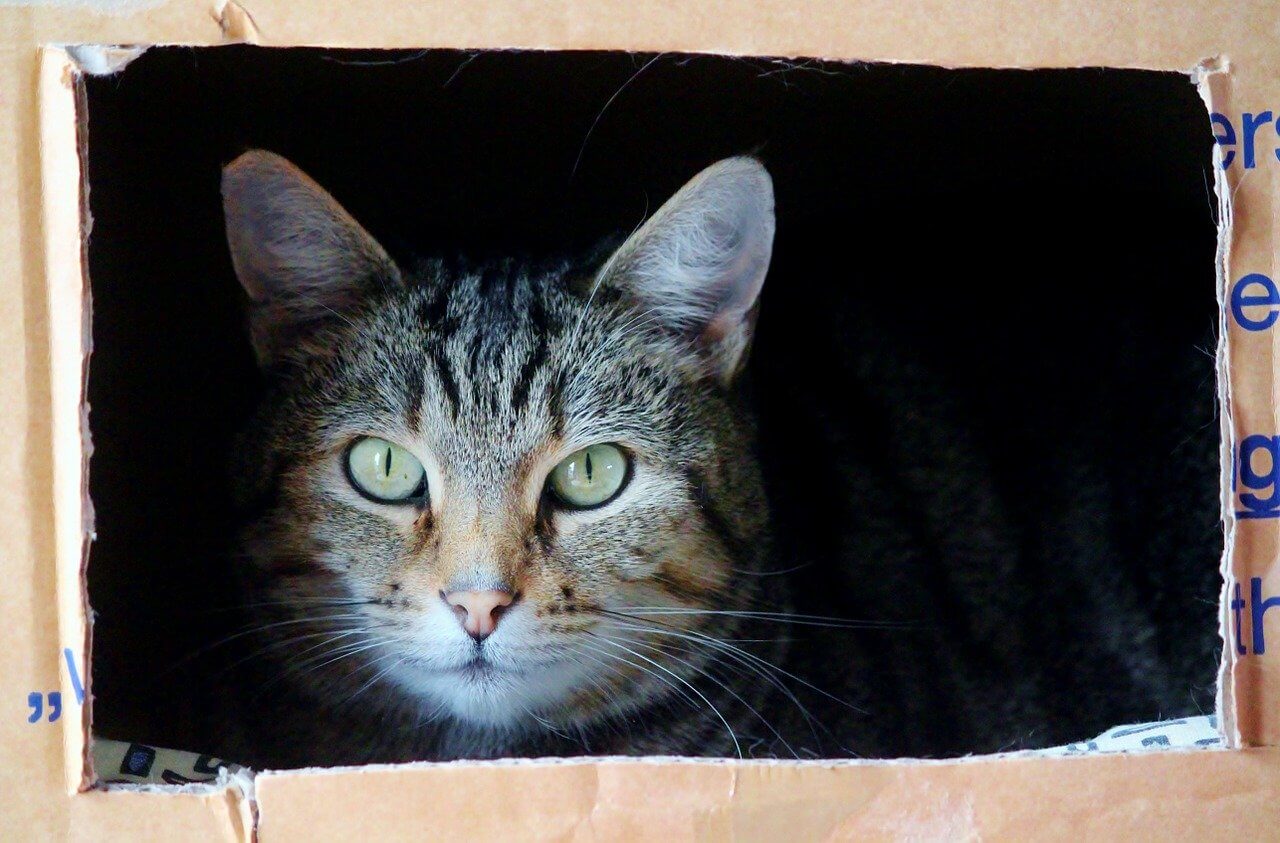Moving Into a New Home? Help Your Cat Adjust With These Tips
Last Updated on
Featured photo by FOX from Pexels
Guest post from Brandon Butler.
Like humans and many other members of the Animal Kingdom, cats are creatures of habit. When their daily routines and living environments are disrupted, cats often experience stress and anxiety, especially if they’re not fed, socialized, groomed, or given fresh litter on a normal schedule. And while some changes to routine are unavoidable—like moving house with your feline companion—there are several things you can do before, during, and after the move to ease your kitten’s anxiety and help him feel as safe and secure as possible.
Disclaimer: This post contains affiliate links. If you make a purchase through our links, we may receive a small commission, but it won’t cost you any extra. Thank you!
Quick Navigation
- 1. Before moving day.
- 2. Car rides and long-distance moves.
- 3. Additional tips for traveling by vehicle with your kitty companion.
- 4. Settling into your new home.
- 5. Keep a close eye on your feline companion.
Before moving day.
As you begin to prepare for moving day, one of the best things you can do for your feline friend is to stick to a routine as best as possible. Continue to feed, groom, and socialize your cat at the same times each day, or use a timed feeding bowl if you’re unable to keep up with your feline’s regular mealtimes. Some of the best automatic food dispensers for cats include the WOPET Automatic Pet Feeder and PetSafe Eatwell 5-Meal Automatic Pet Feeder.
Even when you’re busy packing, cleaning the house, and preparing for your move, your cat’s litter box should be scooped daily and thoroughly cleaned at least twice a week. The more you can stick to your cat’s regular routine, the less stressed and anxious he’ll be throughout the moving process.
Moreover, it’s important to give your cat plenty of cuddles and attention leading up to moving day. But if he seems stressed or disoriented amidst all the action, it may be helpful to board your kitten for a few days or send him to a familiar friend or family member’s home, especially if strangers are streaming in and out of your house (like movers, real estate agents, and prospective homebuyers or tenants).
In some cases, however, you may be able to keep your cat and all his belongings in a quiet, undisturbed room until the day of the move. This will keep your feline safe and comfortable until moving day, and reduce his risk of sustaining an injury, getting in the way, or sneaking outside.

Car rides and long-distance moves.
If you’re relocating to another state with your feline friend and/or will be taking your cat on an extended car ride, you may need to book pet-friendly hotel accommodations, train your cat to use his carrier, and take your kitty on a few practice car rides before the day of your move. Short practice runs are typically best.
Additionally, it may be helpful to give your cat some time to explore the vehicle’s interior with the engine turned off. If you’re worried about your cat escaping from the vehicle or running loose, however, you can purchase a feline leash or harness for car rides.
>> Shop cat carriers on Chewy.com <<
Here are some additional tips for traveling by vehicle with your kitty companion:
- Purchase the right carrier for your cat. Hard carriers are typically best for anxious or difficult cats, while calm felines may prefer soft carriers. Your cat should be able to stand up in his carrier and comfortably turn around, but the carrier should not be overly large or spacious.
- Introduce your cat to his carrier in advance. Instead of hiding the carrier away until moving day, keep it out in the open to give your cat a chance to explore it on his own. When your cat enters the carrier on his own, reward him with a treat.
- Incorporate familiar smells. To keep your kitten comfortable, safe, and secure while traveling by vehicle, be sure to incorporate familiar smells, including his favorite toys and blankets.
- Alleviate anxiety. If your cat is stressed or anxious, try playing some classical music for him, or wipe down his carrier with a comforting and cat-friendly wipe or spray. A ThunderShirt for Cats can also be helpful for long car rides. If your cat seems overly stressed during your practice runs, however, talk to your veterinarian about prescribing an anxiety-relieving medication such as buprenorphine or alprazolam.
>> Related Content: Traveling with Cats: Motion Sickness and How to Solve It
If you’re moving to a new state while unemployed or without a lot of money, it may be helpful to stay with friends or family in the area—as long as they’re able to accommodate you and your cat. While staying with your loved ones, you can begin to look for local employment opportunities and pet-friendly housing options for you and your feline companion.
Settling into your new home.
Once you’ve arrived at your new home, it’s important to create a safe and quiet space for your cat companion, preferably a room with a door. Be sure to include your cat’s litter box, food and water dishes, toys, and bedding in this quiet space, and give him some time to adjust to his new surroundings before introducing him to the rest of the home. You can even use a soft cloth to stroke your kitten’s face and neck before wiping the cloth onto other surfaces that will be accessible to him.
Once you’ve given your cat some time to recover from the move, you can begin to introduce him to other parts of your new home. However, it’s best to introduce one room at a time and keep him indoors for at least a week before introducing him to your garden, backyard, or another safe outdoor space. If you think your cat may try returning to your former home, it’s best to keep him indoors for much longer. To be on the safe side, your cat should also be wearing a collar with an identification tag.

Keep a close eye on your feline companion.
For the first few weeks in your new home, you’ll want to keep a close eye on your cat to ensure that he’s adjusting to his new surroundings. If he’s stressed or unable to adjust, it’s important to schedule an appointment with a veterinarian to see if there’s anything else you can do to ease your cat’s transition.
Remember to remain patient with your feline friend, and don’t force him into anything he’s not ready for. It may take a bit longer than expected, but eventually, your beloved cat companion will come out of hiding and begin to feel safe and secure in his new surroundings.
Did you find this post useful? Pin it for later!










